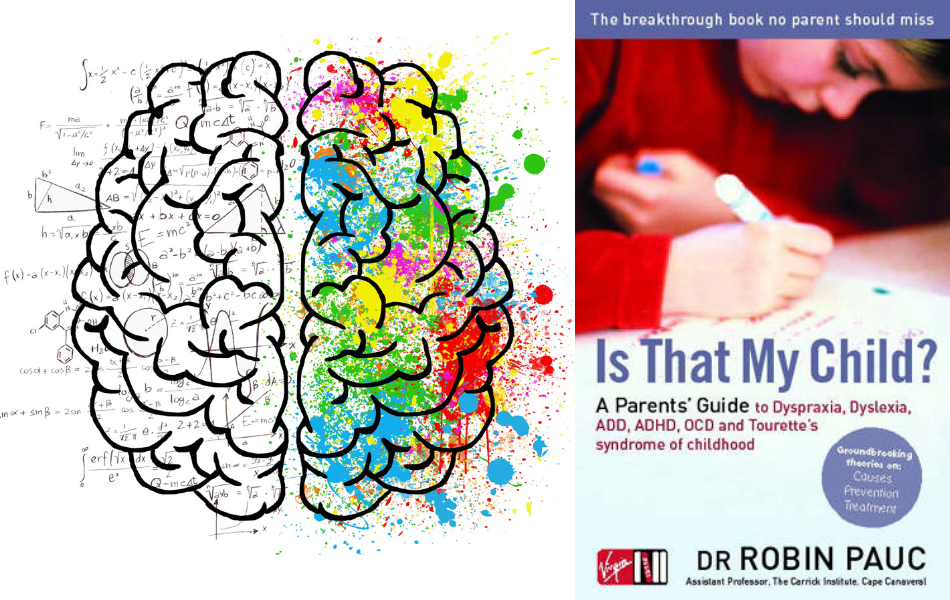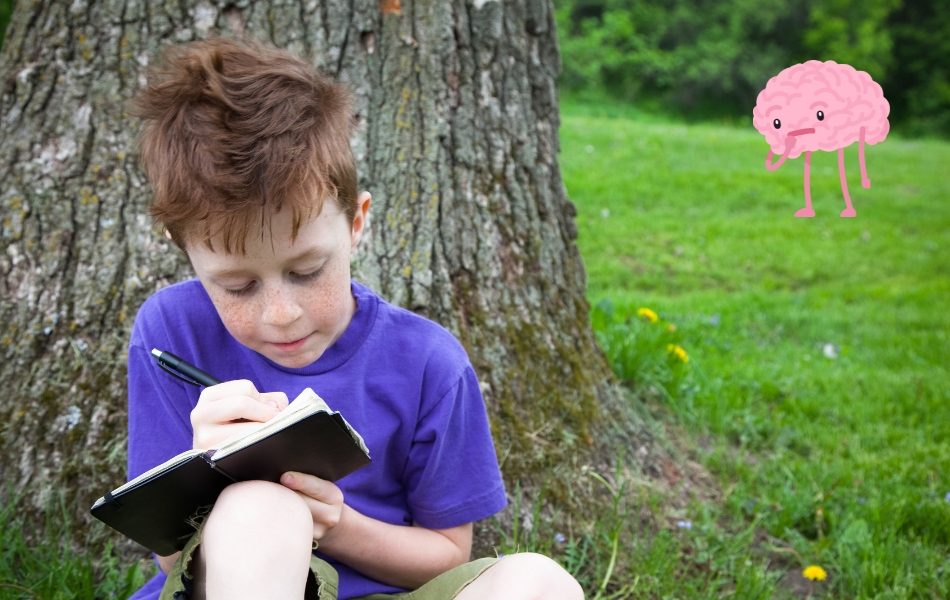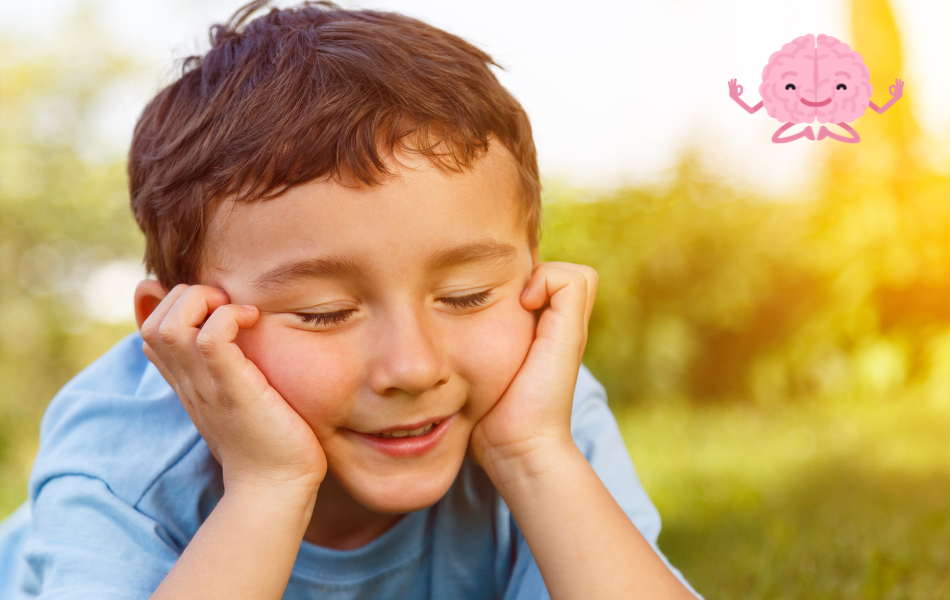This blog explores practical and innovative strategies for building emotional resilience in children, inspired by the mindset and beliefs of Dr. Robin Pauc.
8-year-old Emma forgot her lines during a school talent show and stood frozen on stage. Tears welled up, but she took a deep breath, smiled, and improvised a song instead. The audience erupted in applause. Emma’s ability to bounce back from embarrassment exemplifies emotional resilience. Parents fostering this quality in children is crucial, helping them navigate life’s inevitable ups and downs with confidence and grace. Emotional resilience equips kids to face challenges, recover from setbacks, and thrive.
Understanding Emotional Resilience
Definition: What is Emotional Resilience?
Emotional resilience is the ability to adapt to stressful situations and crises. It involves managing emotions, maintaining a positive outlook, and bouncing back from setbacks. For children, it means coping with everyday challenges, such as school pressures, social conflicts, and personal disappointments, healthily and constructively.
Importance: Why is it Crucial for Kids to Develop This Trait?
Developing emotional resilience is essential for children as it lays the foundation for their mental and emotional well-being. Resilient children are better equipped to handle stress, build strong relationships, and achieve goals. This trait helps them navigate childhood challenges, but also prepares them for adult life, fostering long-term success and happiness.
The Neurological Perspective: Insights from Dr. Robin Pauc on How the Brain Supports Emotional Resilience
Dr. Robin Pauc emphasises the brain’s incredible capacity for change, known as neuroplasticity. According to Dr Pauc, fostering emotional resilience involves creating positive neural pathways through consistent practice and reinforcement. Activities that promote problem-solving, emotional regulation, and social interaction can strengthen these pathways, making resilience an ingrained part of a child’s neurological development. Dr Pauc’s approach highlights the importance of a supportive environment that encourages positive experiences and adaptive behaviours, which is crucial for building a resilient brain.
The Mindset and Beliefs of Dr. Robin Pauc

Introduction to Dr Robin Pauc
Dr. Robin Pauc is a renowned specialist in child neurology with extensive experience in understanding and treating neurological disorders in children. He has dedicated his career to exploring how the brain develops and functions, particularly in young minds. Dr Pauc’s work emphasises the importance of a holistic approach to child development, integrating neurological insights with practical strategies to foster emotional and cognitive growth.
Core Beliefs
- Neuroplasticity: Dr. Pauc strongly believes in the brain’s ability to change and adapt throughout life. He advocates for activities that enhance positive neural connections to support emotional and cognitive development.
- Holistic Development: He emphasises the interconnectedness of emotional, physical, and cognitive development, promoting a balanced approach that nurtures all aspects of a child’s growth.
- Positive Reinforcement: Dr Pauc underscores the importance of reinforcing positive behaviours and experiences, which help build a resilient and adaptive mindset.
- Parental Involvement: He believes that parents play a critical role in their child’s development and that their involvement and support are crucial in fostering emotional resilience.
Unique Perspective
Dr Pauc’s insights differ from traditional views in several ways:
- Neurological Focus: Unlike many approaches that may focus solely on behavioural or psychological aspects, Dr Pauc integrates neurological science to explain how the brain’s structure and function can be harnessed to build resilience.
- Practical Application: His strategies are grounded in everyday activities and interactions, making them accessible and easy to implement for parents.
- Comprehensive Approach: Dr Pauc’s methods combine emotional, cognitive, and physical development, recognising that resilience is not just a psychological trait but a holistic one.
- Empowerment Through Knowledge: He empowers parents with knowledge about brain development, encouraging them to create environments that naturally foster resilience rather than relying solely on therapeutic or clinical interventions.
By combining these unique perspectives with practical strategies, Dr Pauc offers a fresh and effective approach to building emotional resilience in children.
Practical Strategies for Building Emotional Resilience
Strategy 1: Neuroplasticity and Positive Reinforcement

Concept: Leveraging the Brain’s Ability to Change and Adapt
Neuroplasticity refers to the brain’s remarkable capacity to reorganise itself by forming new neural connections throughout life. This ability is especially pronounced in children, making it a critical period for fostering emotional resilience. By providing positive reinforcement, we can help strengthen the neural pathways associated with adaptive and resilient behaviours.
Practical Application: Activities that Encourage Positive Reinforcement
One effective way to harness neuroplasticity is through positive reinforcement, which involves recognising and rewarding efforts and behaviours that contribute to resilience. Instead of focusing solely on outcomes, praising children for their efforts encourages a growth mindset and perseverance.
Example: Implementing a “Growth Mindset” Journal
A practical example of this strategy is the introduction of a “growth mindset” journal. This journal can be used as a daily activity where children record their achievements, efforts, and challenges. Here’s how it can be implemented:
- Daily Entries: Encourage children to write or draw about what they did that day, focusing on moments where they tried something new, overcame a challenge, or made an effort, regardless of the outcome.
- Reflection: Have children reflect on what they learned from these experiences and how they felt during the process. This helps them internalise the value of effort and persistence.
- Parental Involvement: Parents can participate by discussing the entries with their children, providing positive feedback, and sharing their own experiences of growth and resilience.
- Celebrating Progress: Periodically review the journal with the child, celebrating the progress they’ve made and reinforcing the importance of effort and learning from mistakes.
By consistently practising this activity, children will develop a stronger sense of self-efficacy and resilience, understanding that effort and perseverance are key to overcoming challenges and achieving success.
Strategy 2: Emotional Literacy and Communication

Concept: Teaching Kids to Understand and Express Their Emotions
Emotional literacy is the ability to recognise, understand, and healthily express emotions. Developing this skill in children is crucial for their emotional resilience, as it helps them manage their feelings, communicate effectively, and build strong relationships. By teaching kids to identify and articulate their emotions, we empower them to handle stress and navigate social interactions more effectively.
Practical Application: Using Tools Like Emotion Wheels and Feelings Charts to Facilitate Discussions
Tools such as emotion wheels and feelings charts are effective in helping children recognise and label their emotions. These visual aids provide a concrete way for kids to identify their feelings and facilitate open discussions about emotions.
Example: Family “Emotion Check-Ins” During Dinner
A practical and engaging way to implement emotional literacy is through family “emotion check-ins.” Here’s how to incorporate this activity into your daily routine:
- Set Up the Tools:
- Emotion Wheel: Create or purchase an emotion wheel that includes a variety of emotions, from basic feelings like happy, sad, and angry to more nuanced ones like frustrated, excited, or anxiety.
- Feelings Chart: Use a chart with faces showing different emotions to help younger children who might find it easier to identify with visual cues.
- Dinner Time Routine:
- Daily Check-In: During dinner, make it a routine for each family member to share how they felt throughout the day using the emotion wheel or feelings chart.
- Express and Explain: Encourage everyone to not only name their emotion but also explain why they felt that way. This promotes understanding and empathy among family members.
- Active Listening: Teach and model active listening by giving each person full attention, validating their feelings, and responding with empathy.
- Encourage Open Dialogue:
- Safe Space: Create an environment where everyone feels safe to express their emotions without judgment.
- Problem-Solving: Discuss ways to manage difficult emotions and brainstorm solutions to any issues that arise during the day. This helps children learn coping strategies and problem-solving skills.
- Reinforce Positive Communication:
- Praise Efforts: Acknowledge and praise children when they successfully identify and express their emotions. Positive reinforcement strengthens their emotional literacy skills.
- Modelling: Parents should also share their emotions and how they manage them, providing a model for healthy emotional expression.
By incorporating these tools and routines into daily life, children become more comfortable and skilled in understanding and communicating their emotions. This foundational skill is a key component of emotional resilience, equipping them to handle challenges and build strong, empathetic relationships.
Strategy 3: Problem-Solving and Critical Thinking

Concept: Encouraging Kids to Approach Problems Methodically and Creatively
Problem-solving and critical thinking are essential skills that enable children to navigate challenges and setbacks effectively. By teaching kids to approach problems methodically and creatively, we help them develop the ability to analyze situations, think critically, and come up with innovative solutions. These skills are integral to building emotional resilience, as they empower children to handle adversity with confidence and resourcefulness.
Practical Application: Introducing Problem-Solving Games and Activities
To foster these skills, it’s beneficial to engage children in games and activities that require them to think critically and solve problems. These activities should encourage exploration, experimentation, and teamwork, helping kids develop a systematic approach to tackling challenges.
Example: Setting Up a “Challenge of the Week”
A fun and engaging way to promote problem-solving and critical thinking is by implementing a “challenge of the week.” Here’s how you can set up and run this activity:
- Define the Challenge:
- Variety of Tasks: Each week, present a new challenge that requires creative and critical thinking. This could range from building a structure with limited materials to solving a complex puzzle or designing a simple invention.
- Age-Appropriate: Ensure the challenges are suitable for the age and skill level of the children involved.
- Form Teams:
- Collaborative Effort: Encourage kids to work in teams, fostering collaboration and communication. This helps them learn from each other and appreciate diverse perspectives.
- Role Assignments: Assign different roles within each team, such as leader, recorder, and presenter, to ensure everyone participates actively.
- Provide Resources:
- Materials and Tools: Supply necessary materials and tools for the challenge, but also encourage kids to think creatively about using available resources.
- Guidelines: Offer clear instructions and guidelines, but allow flexibility for kids to explore their own methods and solutions.
- Facilitate the Process:
- Guidance: While it’s important to let kids navigate the challenge independently, provide guidance when needed. Ask open-ended questions to stimulate their thinking and problem-solving process.
- Encouragement: Offer encouragement and positive feedback throughout the activity to build confidence and motivation.
- Review and Reflect:
- Presentation: At the end of the week, have each team present their solution or project. This helps build communication skills and allows kids to showcase their efforts.
- Reflection: Conduct a reflection session where children discuss what worked, what didn’t, and what they learned from the experience. This reinforces critical thinking and continuous improvement.
- Celebrate Success:
- Recognition: Celebrate the effort and creativity of all participants, regardless of the outcome. Recognize unique approaches and innovative solutions.
- Rewards: Consider offering small rewards or certificates to acknowledge participation and effort, further motivating kids to engage in future challenges.
By incorporating problem-solving games and the “challenge of the week” into your routine, you provide children with regular opportunities to develop critical thinking skills. This structured yet flexible approach helps them become more adept at analysing situations, overcoming obstacles, and thinking creatively—key components of emotional resilience.
Strategy 4: Building Social Connections

Concept: The Importance of Supportive Relationships in Fostering Resilience
Supportive relationships play a vital role in developing emotional resilience in children. Positive social interactions provide a sense of belonging, boost self-esteem, and offer emotional support during challenging times. These connections act as a buffer against stress and help children learn essential social skills, empathy, and cooperation.
Practical Application: Encouraging Group Activities and Team Sports
To foster these supportive relationships, it’s crucial to encourage children to participate in group activities and team sports. These settings provide opportunities for kids to interact, collaborate, and build friendships, which are foundational for emotional resilience.
Example: Organizing Neighborhood Playdates or Family Game Nights
Here are practical ways to implement this strategy:
- Neighborhood Playdates:
- Planning: Organise regular playdates with children from the neighbourhood. Rotate the hosting responsibilities among different families to build a sense of community.
- Activities: Plan a variety of activities that promote teamwork and cooperation, such as building a fort, playing group games like hide-and-seek, or working on a craft project together.
- Parental Involvement: Encourage parents to join in occasionally, fostering a supportive network of adults that children can rely on.
- Family Game Nights:
- Scheduling: Set aside one evening a week for a family game night, making it a consistent and anticipated event.
- Games Selection: Choose games that require teamwork and communication, such as board games, card games, or cooperative video games.
- Emotional Learning: Use these sessions to model and teach emotional regulation, such as handling winning or losing gracefully and supporting each other.
- Team Sports:
- Enrollment: Encourage children to join local sports teams or recreational leagues. Sports like soccer, basketball, or swimming offer structured environments where children can learn to work with others toward a common goal.
- Supportive Coaching: Seek out programs with coaches who emphasise teamwork, effort, and personal growth over winning.
- Parental Support: Attend games and practices to show support, reinforcing the value of commitment and effort.
By integrating these activities into your child’s routine, you help them develop strong social bonds and a reliable support system. These connections not only enhance their current well-being but also equip them with the social skills and emotional support necessary to navigate future challenges with resilience.
Strategy 5: Mindfulness and Relaxation Techniques

Concept: Helping Kids Manage Stress and Stay Present
Mindfulness and relaxation techniques are powerful tools for helping children manage stress and stay focused in the present moment. These practices encourage self-awareness, emotional regulation, and a sense of calm, which are essential for building emotional resilience. By teaching kids how to pause, breathe, and reflect, we equip them with the skills to handle anxiety, frustration, and other challenging emotions effectively.
Practical Application: Teaching Mindfulness Exercises Like Deep Breathing and Guided Imagery
Incorporating mindfulness exercises into daily routines can help children develop these skills. Simple practices such as deep breathing and guided imagery can be taught and practised regularly to help kids learn how to calm their minds and bodies.
Example: Starting Each Day with a 5-minute Mindfulness Session
One effective way to integrate mindfulness into a child’s routine is by starting each day with a short mindfulness session. Here’s how you can implement this practice:
- Create a Calm Environment:
- Designated Space: Choose a quiet, comfortable space where the child can sit or lie down without distractions.
- Atmosphere: Consider using soft lighting, calming music, or nature sounds to create a relaxing atmosphere.
- Introduce Deep Breathing:
- Simple Instructions: Teach children to take slow, deep breaths. Inhale through the nose for a count of four, hold for a count of four, and exhale through the mouth for a count of four.
- Guided Practice: Lead them through a few rounds of deep breathing, emphasising the importance of focusing on their breath and letting go of other thoughts.
- Incorporate Guided Imagery:
- Visualisation: Encourage children to close their eyes and imagine a peaceful scene, such as a beach, forest, or favourite place. Guide them to picture the details—what they see, hear, feel, and smell.
- Narration: Use a gentle, soothing voice to narrate the imagery, helping them stay focused and engaged.
- Practice Mindfulness Techniques:
- Body Scan: Teach kids to perform a body scan, mentally checking in with different parts of their body from head to toe, noticing any tension or relaxation.
- Mindful Observation: Encourage them to observe their surroundings or an object (like a flower or a piece of fruit) mindfully, paying attention to colours, shapes, textures, and smells.
- Consistency and Routine:
- Daily Practice: Make this 5-minute mindfulness session a daily habit, ideally at the same time each morning to build consistency.
- Adaptability: Be flexible and adapt the exercises to suit the child’s age, preferences, and responses.
- Reinforce the Benefits:
- Discussion: Talk with children about how they feel after the mindfulness session and throughout the day, reinforcing the positive impact on their mood and stress levels.
- Application: Encourage them to use these techniques whenever they feel overwhelmed or need a moment to centre themselves.
By starting each day with a brief mindfulness session, children learn to ground themselves, manage their emotions, and approach the day with a calm and focused mindset. This practice not only reduces immediate stress but also builds a foundation of emotional resilience that will benefit them throughout their lives.
Conclusion

In this blog, we explored practical and innovative strategies for building emotional resilience in children, inspired by the insights of Dr. Robin Pauc. We began by understanding the importance of emotional resilience and its neurological underpinnings. We then delved into specific strategies: leveraging neuroplasticity through positive reinforcement, enhancing emotional literacy and communication, fostering problem-solving and critical thinking, building social connections, and incorporating mindfulness and relaxation techniques. Each strategy was paired with practical applications and real-world examples to help parents easily integrate these practices into their daily routines.
Encouragement
Implementing these strategies may seem daunting at first, but even small steps can lead to significant positive changes in your child’s emotional well-being. By consistently applying these methods, you will likely observe improvements in how your child handles stress, interacts with others, and bounces back from challenges. Remember, fostering emotional resilience is a gradual process, but the effort invested will yield lifelong benefits for your child’s mental and emotional health.
Call to Action
We invite you to join the conversation and share your experiences with these strategies. Have you tried any of these techniques? What worked well for your child, and what challenges did you face? Your insights and tips can provide valuable support and inspiration to other parents on the same journey. Together, we can create a community dedicated to raising resilient, confident, and emotionally healthy children. Please share your stories and suggestions in the comments below!

Dr Robin Pauc
Dr. Robin Pauc, a British clinical neuroscientist and author known for his work on developmental disorders, has specific views on children’s emotions, particularly in relation to neurological development and learning difficulties.
Some Good Reads by Dr Pauc
- The Myth: Now you really can improve your child’s life
- Is That My Child?: The Brain Food Plan: Help your child reach their potential and overcome learning difficulties
- Mindful Parenting (a parent-thesis) (Is That My Child? Book 4)
Other Excellent Reads
- Building Emotional Literacy in Kids
- Parents Practical Guide for Emotional Literacy in Children
- Research Methodologies: Understanding Kids’ Emotions
- Insights from Psychological Studies on Children Literacy
Recent Posts
Discover how different parenting styles influence your child’s emotional growth and learn practical strategies to help them regulate emotions effectively. The way you parent today could shape...
Break the Cycle: Heal to Truly Support Your Children. Learn how childhood emotional neglect or abuse shapes parenting, and how to create lasting change. I’m writing this blog from personal...

